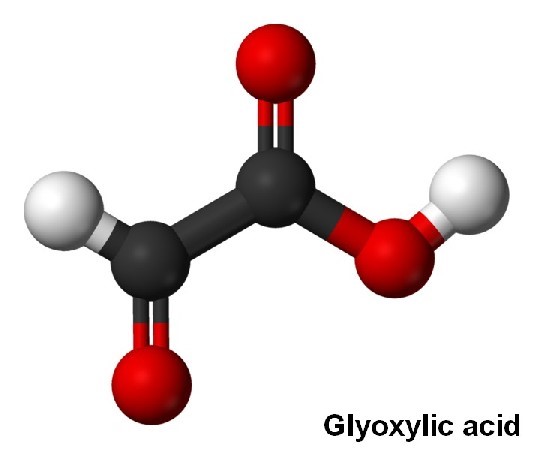
Glyoxylic Acid, also known as xoacetic acid is one of the C2 carboxylic acids, which is any of a class of organic compounds in which a carbon (C) atom is bonded to an oxygen (O) atom by a double bond and to a hydroxyl group (−OH) by a single bond. Glyoxylic Acid contains an aldehyde functional group and the chemical formula is usually described as OCHCO2H. The aldehyde functional group is not observed in solution or as a solid and it exists mainly as hydrate with its electron-withdrawing substituents generally. So, the chemical formula of Glyoxylic Acid is described as the monohydrate in general, just as (HO)2CHCO2H.
Scientists at Creative Proteomics utilize a highly quantitative method with high-performance liquid chromatography (HPLC) for the determination of Glyoxylic Acid levels in various samples, including Plant and more. High-Performance Liquid Chromatography (HPLC) using a differential refractive index detector (RID) for the determination of Glyoxylic Acid levels in a lot of biological samples. This Methodology provides accurate, reliable, and reproducible results of Glyoxylic Acid measurement, which enables us to analyze of Glyoxylic Acid levels in vitro and in vivo.
When in solution at neutral pH, Glyoxylic Acid exists in the form of glyoxylate, which is the conjugate base of gloxylic acid. Glyoxylate is an intermediate of the glyoxylate cycle, which is an anabolic pathway occurring in plants, bacteria, protists, and fungi to allows cells to utilize simple carbon compounds as a carbon source when complex sources such as glucose are not available. Glyoxylate is also the byproduct of the amidation process to biosynthesis of several amidated peptides. Glyoxylic Acid is also can be used to check the presence of tryptophan in protein by Hopkins Cole reaction, which is also known as the Glyoxylic Acid reaction and a chemical reaction used for detecting the presence of tryptophan in proteins.
The Russian-Polish botanist M. Tswett is generally recognized as the first person to establish the principles of chromatography. In a paper he presented in 1906, Tswett described how he filled a glass tube with chalk powder (CaCO3) and, by allowing an ether solution of chlorophyll to flow through the chalk, separated the chlorophyll into layers of different colors. He called this technique “chromatography”. Fundamentally, chromatography is a technique used to separate the components contained in a sample. High Performance Liquid Chromatography (HPLC) is a method able to separate non-volatile, thermally unstable, and polar components separate or in a mixture. HPLC is a type of chromatography that, because of its wide application range and quantitative accuracy, is regarded as an indispensable analytical technique, particularly in the field of organic chemistry. It is also widely used as a preparation technique for the isolation and purification of target components contained in mixtures.
Glyoxylic Acid Analysis Service at Creative Proteomics supports your research in Glyoxylic Acid Analysis. HPLC Based Analysis Service Platform enable us at Creative Proteomics offers you a state-of-the-art Analysis Service.
Sample Type
Plant and more
Method
High-Performance Liquid Chromatography (HPLC) using a differential refractive index detector (RID) for the determination of Glyoxylic Acid levels in a lot of biological samples. This Methodology provides accurate, reliable, and reproducible results of Glyoxylic Acid measurement, which enables us to analyze of Glyoxylic Acid levels in vitro and in vivo.
Send us your samples, you will get all information that you need!







